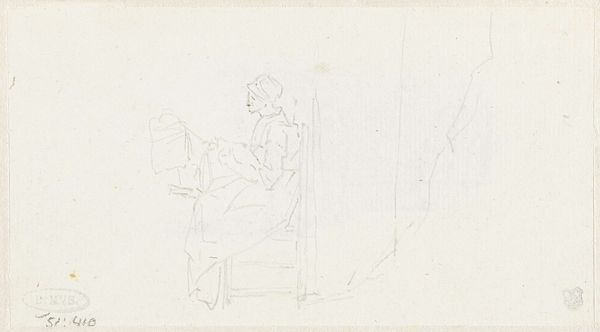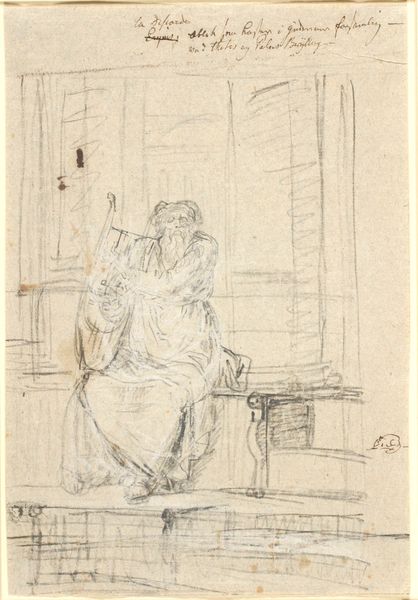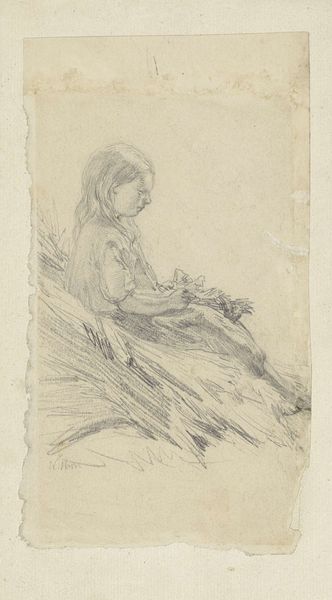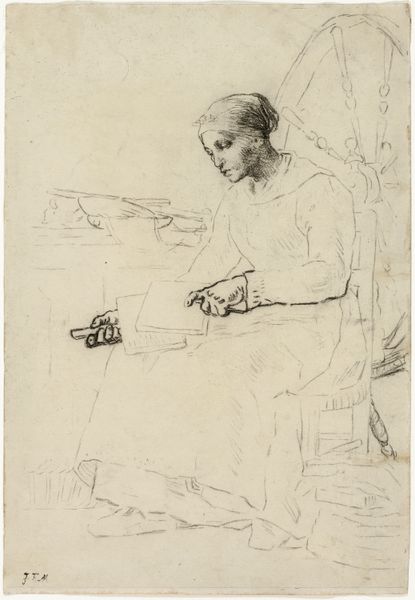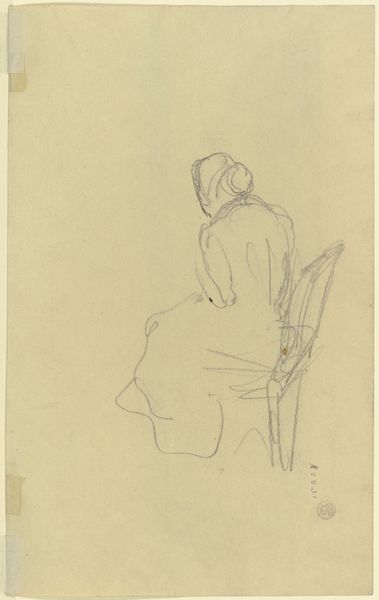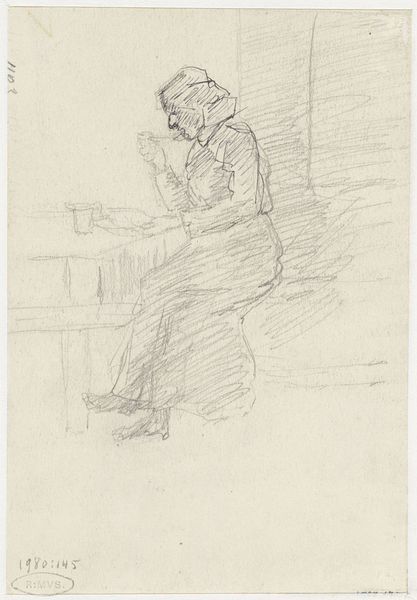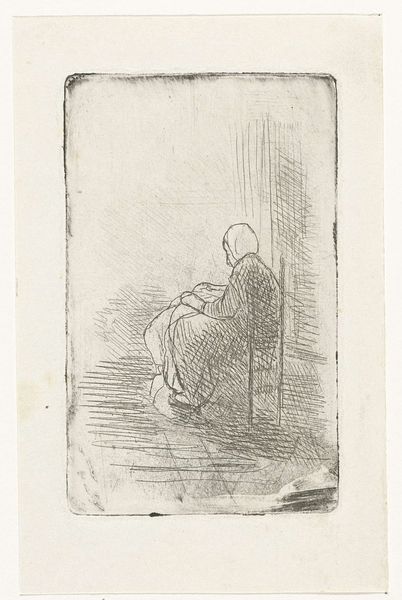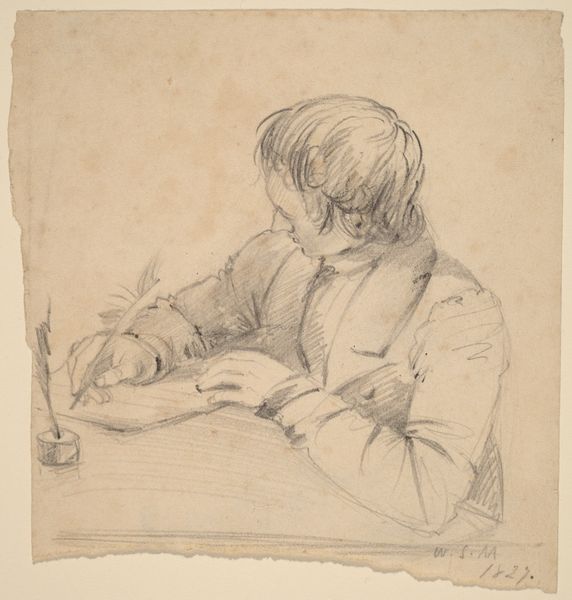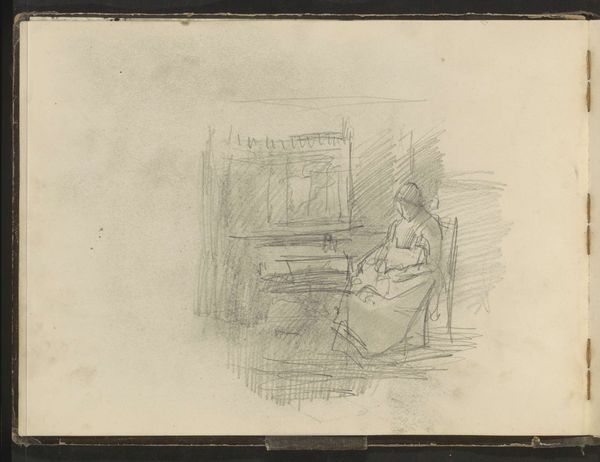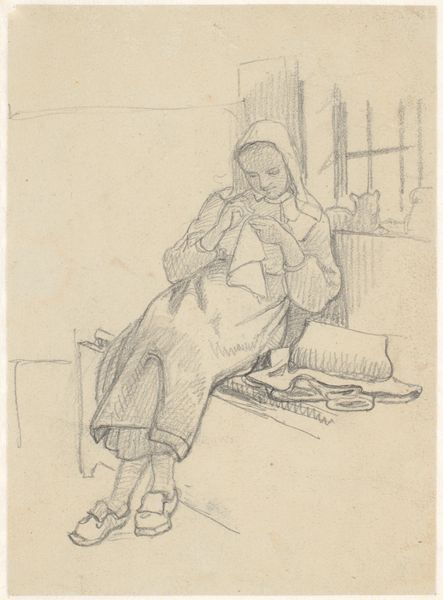
Dimensions: height 223 mm, width 139 mm
Copyright: Rijks Museum: Open Domain
Editor: Here we have "Zittende lezende oude vrouw," or "Seated Old Woman Reading," by Antoon Derkinderen, dated between 1869 and 1925. It’s a pencil drawing on paper, and I’m struck by how intimate and immediate it feels, despite the sketch-like quality. What draws your eye to this piece? Curator: The image encapsulates a powerful tension, one common in the late 19th and early 20th centuries: the representation of aging and the role of women, particularly within domestic settings. It raises the question: was this woman afforded the time and resources for education, for literacy, within the socio-political landscape of her time? Consider what her reading symbolizes here. Editor: I hadn’t thought about that. I was focusing on the intimacy of the drawing. It does feel like a stolen moment. Curator: Exactly. But whose moment is it? And who is doing the stealing? The artist, the viewer, or perhaps even the woman herself, carving out a space for herself within a potentially restrictive environment? What do you make of the unfinished quality of the surrounding scene? Editor: Maybe that the woman and her reading are the sole focus; everything else is secondary? Curator: Possibly. Or, might it reflect the social realities of the time, where women's lives, especially those of older women, were often relegated to the background? How does the impressionistic style itself – the loose lines, the fleeting quality – contribute to this understanding? Editor: I see what you mean. It's not just a portrait of an old woman; it’s a commentary on her position in society. I'll definitely look at art differently now. Curator: Precisely! That's the power of art history – unveiling those hidden dialogues.
Comments
No comments
Be the first to comment and join the conversation on the ultimate creative platform.
